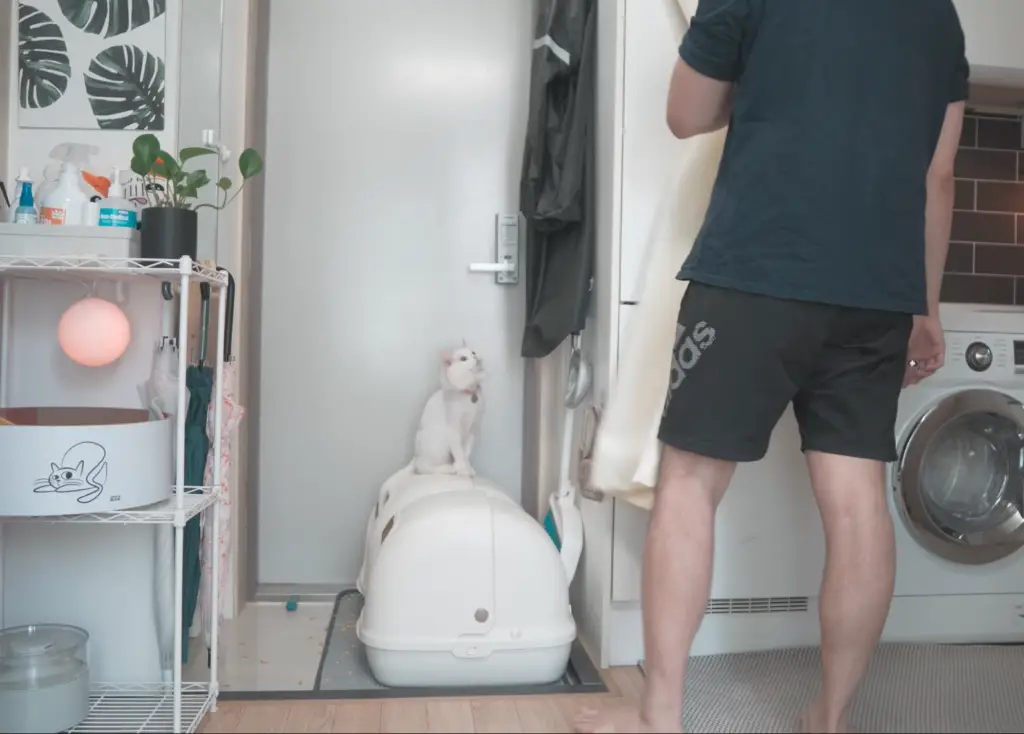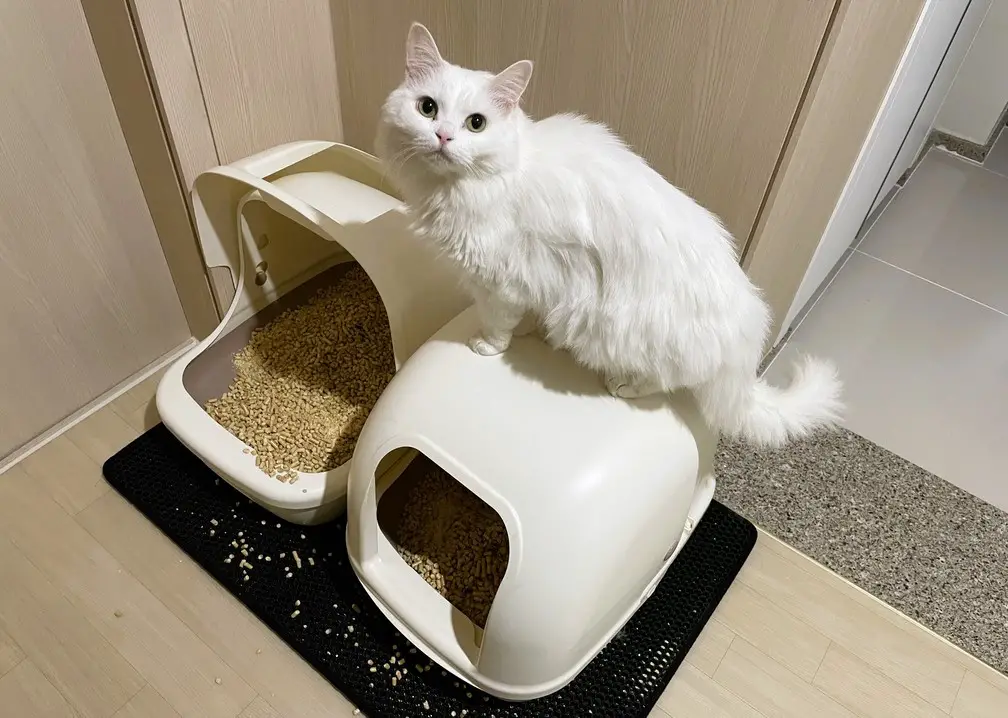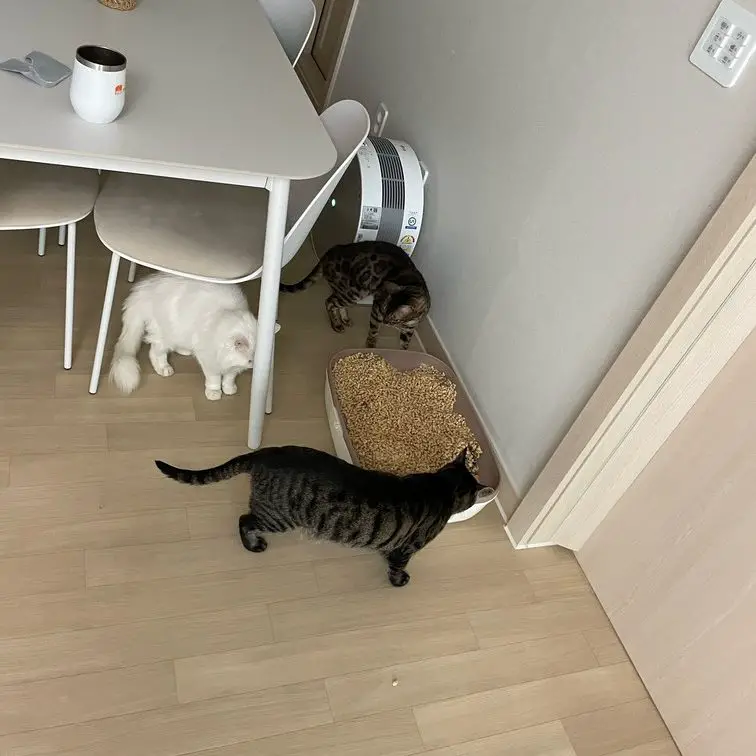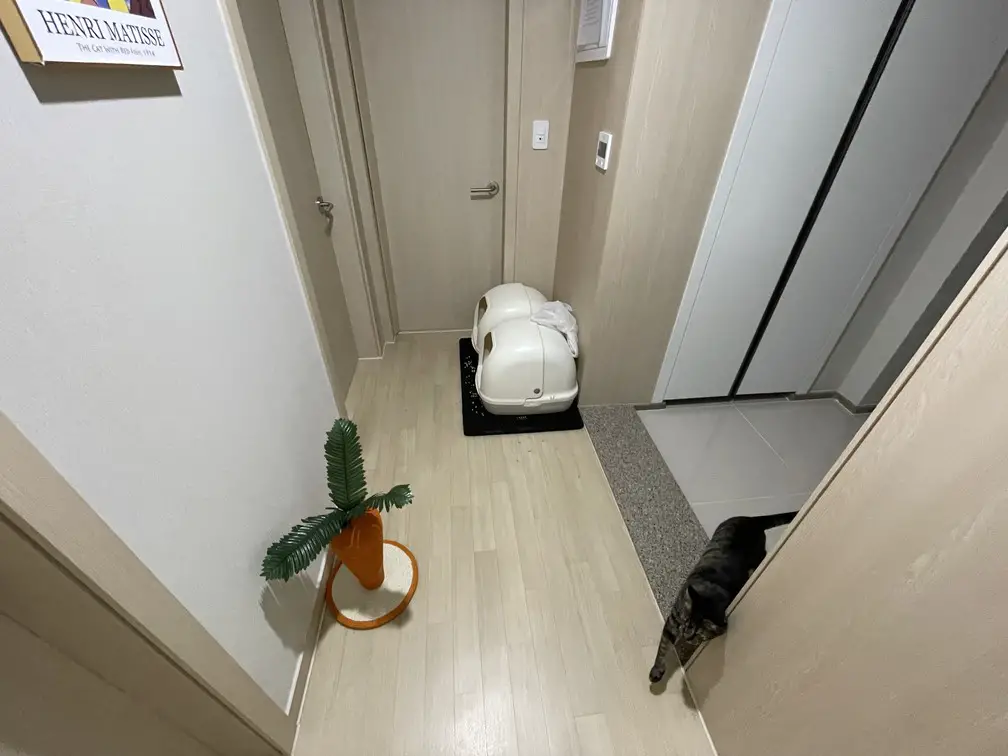Cats are beloved pets, but their elimination habits can be a source of frustration for owners – especially if they choose to eliminate outside of where they’re supposed to. Choosing the right litterbox for your cat is essential for their well-being and for maintaining a clean and pleasant living environment. We’ll also be busting some myths along the way.

But with so many available options, it can be difficult to know which type of litterbox is the best fit for your cat. So do cats like covered or uncovered litter boxes? According to the research and my own testing, indoor cats largely prefer covered litter boxes that are at least one and a half times the cat’s length (tail not included). However, not all covered litter boxes are created equal.
Read below to see what type of litter box to choose and the one that I use on a daily basis myself.
Cat Elimination in the Wild VS Indoors
In a natural environment, cats will hide to eliminate, bury their feces, and keep an eye on their surroundings during defecation. Cats have a highly developed sense of smell, which is why they choose an area in which they won’t be disturbed by the smell of their previous eliminations.

When living in an indoor environment, cats will naturally seek out a quiet and private place to eliminate. This is why the choice of litterbox is so important for indoor cats. Thankfully, some studies and research reveal some insights into what our cats prefer.
The Science: Covered VS Uncovered Litter Box
A study looked at what kind of litter box cats liked better, a covered one or an uncovered one, and in two different sizes. 25 cats took part in the study, and they were between 1 and 8 years old, healthy, and lived in an apartment without access to the outside.
The study lasted for 28 days, and during this time, the people taking care of the cats checked the litter box and wrote down if the cats went to eliminate. They cleaned the litter boxes every evening and refilled them with fresh litter every seven days.
Here are the key findings of the study:
- The study found that cats generally make a clear choice and stick to it. The number of cats that used both litterboxes equally was very low, just one cat out of 25.
- The results showed that the cats had a clear tendency to defecate in a covered litterbox, which is consistent with the cat’s necessity to be in a quiet place. However, the surface area of the litterbox plays a significant part, leading to a significant preference for a large covered litterbox.
- Removing the swinging door also played a major role in preventing a bad smell from accumulating during the week.
- The study also found that whether a cat is male or female and what kind of litter box they used before the study did not affect their preference for the type of litter box.
This study shows that most indoor cats prefer to defecate in a large covered litterbox without a swinging door. Owners should be aware of this preference.
My Own Covered VS Uncovered Litter Box Experiment
I conducted my own tests in my apartment by using one covered litter box and one uncovered litter box for a week. I selected litter boxes that had detachable hoods or coverings that could be removed from the bottom of the box. Both had no swinging door, and they were the same design, thus the same size/shape.
I raise four cats in my apartment, and they are all neutered/spayed. They also have a good relationship with each other. One is a Bengal cat, one is a Russian Blue, one is a Scottish Straight, and one is a regular domestic cat. I conducted the experiment to fulfill my curiosity, as I previously believed cats preferred an open litter box.

I ran my experiment for one week. I placed one box on one side of my apartment near the door with a hood, and the other was in the living room without a hood. Both places were places of high traffic, thus, of high importance for cats to eliminate. Every morning I would clean the litter box and compare the two litter boxes.
Here are my notes:
- During the morning scoop, it was clear that there were more feces in the covered litter box than in the uncovered one.
- At the end of the week, it was clear that cats preferred the covered litter box.
- The open litter box had so much more litter spilling out from cats digging and kicking.
- The open litter box did not contain smells well.
Needless to say, I quickly put back the cover/hood on that particular litter box.
Covered VS Uncovered Litter Box: So, What Litter Box Is Best?
The study recommends owners consider the size, type of substrate, privacy, ventilation, and accessibility when choosing a litterbox for their cat.
A litterbox should be at least as long as one and a half times the cat’s length (tail not included) and at least one time its size in width. This gives an average of 68×45 cm for a medium-sized cat.
However, a study including 74 cats showed a significant preference for cats for a litterbox of 86 cm long compared to a standard litterbox sold in a shop that was 56 cm long. So, a larger box is generally preferred.

Therefore, according to science, the best litter boxes are:
- Large litter boxes (at least one and a half times the cat’s length). Larger is generally better.
- An easy-to-access litter box (low to the ground, doesn’t require much effort to get in). For example, avoid top-entry litter boxes for very young kittens and older or mobility-impaired cats.
- Covered but no swinging door.
How about other cat litter box types, such as an automatic self-cleaning litter box? I outline full pros/cons guide of different types of litter boxes.
Type of Litter For Indoor Cats
It’s difficult to say which type of litter cats like best, as individual preferences can vary greatly. However, here are some popular options that many cats seem to enjoy:
- Clumping litter (clay, silica, tofu, etc.): forms clumps when it comes into contact with liquid, making it easier to scoop and dispose of. Some cats may have a preference for the texture of the clumping litter.
- Plant-based litter: This type of litter is made from natural materials such as corn, wheat, or recycled paper and is biodegradable and eco-friendly. The unfamiliar texture or smell may put off some cats, but others seem to like it.
- Pine pellets: Pine pellet litter is a type of litter made from compressed sawdust or wood chips derived from pine trees. It’s often considered an eco-friendly option as it’s biodegradable and made from a renewable resource. Pine pellet litter has a natural pine scent that many cats and their owners find appealing. It’s also lightweight, making it easy to handle and dispose of.
Ultimately, the best way to determine which type of litter your cat likes best is to offer a variety and observe their behavior. If they start using a particular type more frequently, then that’s likely their preferred choice.
However, there is ONE litter type that might save you in small houses and apartments: pine litter. This is the type of litter that I have been using for years, and I haven’t looked back once (I have a complete guide to pine litter here).
Why? Other than the benefits above, the main benefit is preventing litter tracking (spreading litter throughout your house). It’s a huge problem with clay-based litter. If you have this problem, check out my article, tips to prevent litter tracking.
My Litter Box Recommendation For Indoor Cats
Finding the perfect litter box for your furry friend can be a daunting task. With so many options on the market, choosing the right one that fits your pet’s needs and your household’s lifestyle can be overwhelming.
Below is the exact litter box that I have used on a daily basis for years now. Again, I exclusively use pine litter pellets, and this litter box works completely fine with them. For other recommendations for indoor cats, check out my recommended cat supplies page!
-
 Check Price!
Check Price!This litter box kit contains some pads and pellets (don't use them). I recommend just putting away the pellets that they give you and get pine litter. Pine litter works very well with this litter box and it's very easy to clean.
We earn a commission if you click this link and make a purchase at no additional cost to you.
-
 Check Price!
Check Price!Litter mats are very effective tools used around the litter area. It traps whatever dust and litter that might come out from the box and prevents tracking. I use this item with my Purina Hooded litter box.
We earn a commission if you click this link and make a purchase at no additional cost to you.

Thank you very much for your videos and guides on introducing cats in a small apartment! My introduction between my 6 month old bengal tabby kitten (Nessie) and 11 month old persian (Nori) seems to be going very well.
Definitely going to make sure they have at least 1 covered litter tray though :). One question I have is that whether Nessie’s interest in chasing Nori every so often is a healthy activity or not. Nori does run away and hiss at Nessie to let her know she doesn’t appreciate it, but I wonder if this should be stopped or not. The method of no isolation introduction has still worked out really well regardless, currently on 4 days of introduction and already eating out of the same bowl.
Can’t wait to see more content and make sure my kittens become great friends!
Thanks for your comment! I’m glad my content has helped. As long as you ensure that Nessie has the attention he/she needs to get rid of the energy (more playtime or a cat wheel), it should turn out alright. With time and routine, their energy levels should eventually sync up!
I came across your YT channel and this article today. I’m in the process of introducing a feral 6 week old male kitten to my resident 4 year old female cat. He’s had the flu and so he’s been isolated by force for two weeks before he’s permitted to get to know my resident cat. It will be interesting how things go once the two become fully aware of each other, and I’ll be following your suggestions. As for litter boxes. I tried the large covered litter box (with flap door removed) on my resident cat and she had no trouble adapting to it from open to closed. However, I had had trouble with the cover. The litter box is between wall and toilet which made it difficult for me to access, open and close the lid considering that I scoop twice a day and so I removed the lid. Now with the new kitten on the block who will get a new litterbox, I’ll go back to the closed version which I’ve got as a spare anyway, but it will be in a different room with easier access because the toilet us fully occupied :D.
BTW, I find your introducing a new cat videos the best out there. I’ve been researching for the last week and so far your approach sounds like one I can work with. I am also inspired with your use of vertical space in your apartment. I live in a comparatively large house but I still want to make good use of the walls to give my 100% indoor kitties an interesting space to live in.